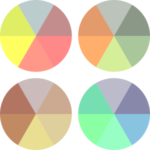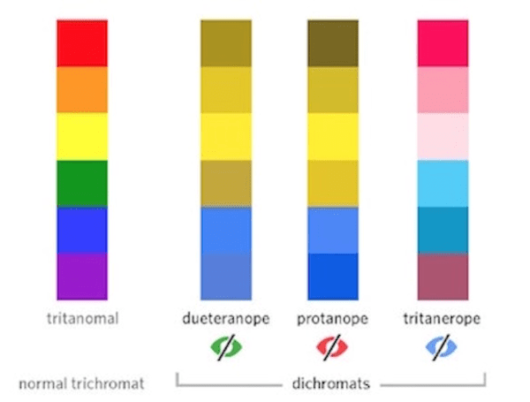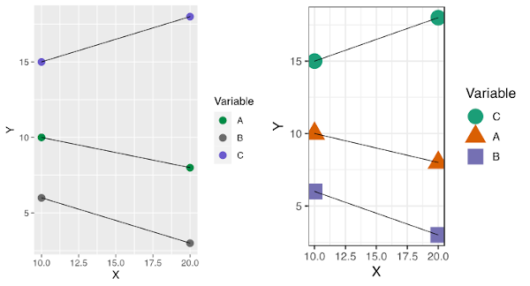
LINKED PAPER
Evaluation and recommendations for greater accessibility of colour figures in ornithology. Pollet, I.L. & Bond, A.L. 2020. IBIS. DOI: 10.1111/ibi.12887. VIEW
Everyone is dealing with stress in different ways. Personally, when anxiety strikes in my life, I like to withdraw from the outside world by working. When the pandemic that we all endure arrived in March and the lockdown was the norm, I had recently finished a post-doc position in Germany, yet I had to somehow keep my mind busy. So, I jumped on the opportunity to work on another project with Alex Bond, albeit a much smaller endeavour than the last one (Pollet et al. 2020). We started from the observation that scientific publications are rapidly changing and online versions are taking a larger part of the reading material. As such, the historical higher price for colour figures is no longer necessary, and scientists may use colours in their published figures more frequently.
But this potential increase of colour figures come to a price for people affected by a colour vision deficiency. They form an invisible minority, yet can represent a large proportion of the public: Up to 10% of men with white background, 7.3 % of Turkish men, and 6.5% of men with Chinese background are affected. Therefore, the choice of wrong colours in the figures can hide the main message of the figures (Fig. 1).
 Figure 1 Six colours seen by people with various form of colour vision deficiency (from www.usabilla.com)
Figure 1 Six colours seen by people with various form of colour vision deficiency (from www.usabilla.com)
In our recent study, we analysed the figures from 1031 ornithological articles published on 2019 and determined the numbers of figures that were not colour-blind compatible, and those that were not black and white printer friendly (as many people tend to print articles to read them). Our results suggest that over 90% of the figures were colour-blind compatible, but only 60% figures were black and white printer friendly. To be as inclusive as possible in our field, we gave recommendations to make figures (Figure 2). This includes using various shape on graphs, and using colours easily distinguishable for people with colour vision deficiency.
 Figure 2 Choice of colour, symbols, and order of legend that can lead to Left: bad, and Right: better colour-blind and printer friendly figures. In left panel, the green and brown symbols are not colour-blind compatible, the legend is not in the same order as the graph, all symbols are the same, the background creates less contrast. In right panel, the colours are colour-blind compatible, the symbols are larger and different for each variable (making them black and white compatible), the legend has a larger font and the variables are in the same order as in the graph, the background offers more contrast.
Figure 2 Choice of colour, symbols, and order of legend that can lead to Left: bad, and Right: better colour-blind and printer friendly figures. In left panel, the green and brown symbols are not colour-blind compatible, the legend is not in the same order as the graph, all symbols are the same, the background creates less contrast. In right panel, the colours are colour-blind compatible, the symbols are larger and different for each variable (making them black and white compatible), the legend has a larger font and the variables are in the same order as in the graph, the background offers more contrast.
We also suggest that, while it is the role of the authors to make sure their figures are understandable to people with colour-vision deficiency, it is also the role of the reviewers and the editors to point out the figures that can be hard to interpret for such people. Most journals lack specific mention in their author’s guidelines regarding colour-blind deficiency and black and white printing. We are pleased and thankful that Ibis journal made a move in the right direction after our study was accepted for publication, and created a permanent link to our paper from their author’s submission guidelines. Let’s hope other scientific journals will follow suit. Since our paper was published, another one also emphasized the choice of colours in scientific communication (Crameri et al. 2020). Together, we can make the scientific community more inclusive.
References
Crameri, F., Shepard, G. E., & Heron, P. J. 2020. The misuse of colour in science communication. Nature Communications 11: 5444. VIEW
Pollet, I. L., Bond, A. L., Hedd, A., Huntington, C. E. , Butler, R. G., & Mauck, R. 2020. Leach’s Storm-Petrel (Oceanodroma leucorhoa), version 1.0. In Birds of the World (S. M. Billerman, B. K. Keeney, P. G. Rodewald, and T. S. Schulenberg, Editors). Cornell Lab of Ornithology, Ithaca, NY, USA. VIEW
Image credit
Top right: Colour wheels | kmicican | Pixabay
Author photo: © Bruno Letournel
If you want to write about your research in #theBOUblog, then please see here.




